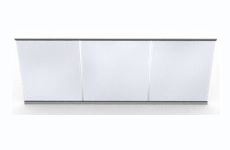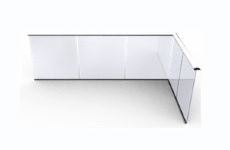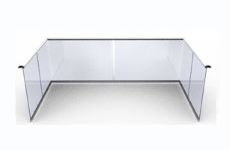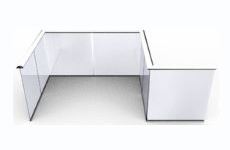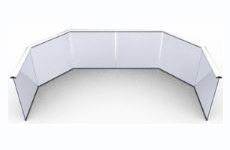How does the use of glass handrails impact the perception of space within a home or building?
Glass Balustrades | Juliet Balconies | Galleries | Articles | Case Studies
To price your balustrade requirement first choose the shape most similar to yours
Glass handrails possess a unique ability to enhance the perception of space within a structure. Unlike traditional wooden or metal railings, glass handrails offer transparency, allowing light to flow freely throughout the area. This transparency creates an illusion of continuity, making the staircase area appear more expansive and interconnected with the surrounding space.
Additionally, the minimalist aesthetic of glass handrails promotes an open and uncluttered atmosphere, further contributing to the sense of spaciousness. In essence, incorporating glass handrails for staircase design can transform a confined area into a visually expansive and inviting environment.

What are the safety considerations associated with glass handrails?
While glass handrails exude sophistication, safety remains a paramount concern in their design and installation. To ensure structural integrity and user safety, tempered or laminated glass panels are commonly utilized. Tempered glass undergoes a heating and rapid cooling process, resulting in increased strength and resistance to breakage. Laminated glass consists of multiple layers bonded together with an interlayer, providing additional durability and preventing shattering upon impact. Furthermore, rigorous testing and adherence to building codes and regulations govern the design and installation of glass handrails. Engineers and architects employ advanced techniques such as stress analysis and load testing to ascertain the structural integrity of the handrails, ensuring they meet safety standards without compromising aesthetics.

How do glass handrails contribute to sustainability in architectural design?
Glass handrails play a role in promoting sustainability within architectural design through their energy-efficient properties and recyclability. The transparency of glass handrails allows natural light to penetrate deeper into the building, reducing the need for artificial lighting during daylight hours. This not only minimizes energy consumption but also creates a more environmentally friendly living or working environment. Additionally, glass is a highly recyclable material, capable of being melted down and repurposed multiple times without losing its quality.
By choosing glass handrails, architects and homeowners can contribute to the circular economy by reducing the demand for virgin materials and minimizing waste generation. This sustainable approach aligns with contemporary design principles focused on minimizing the environmental footprint of construction projects.
The incorporation of glass handrails for staircases transcends mere aesthetics, offering a harmonious blend of elegance, functionality, and sustainability. By delving into the intricacies of their design, safety considerations, and environmental impact, we gain a deeper appreciation for the versatility and ingenuity of this modern architectural element. Contact us now at 01342 410411 to get quality and unique glass handrails.

